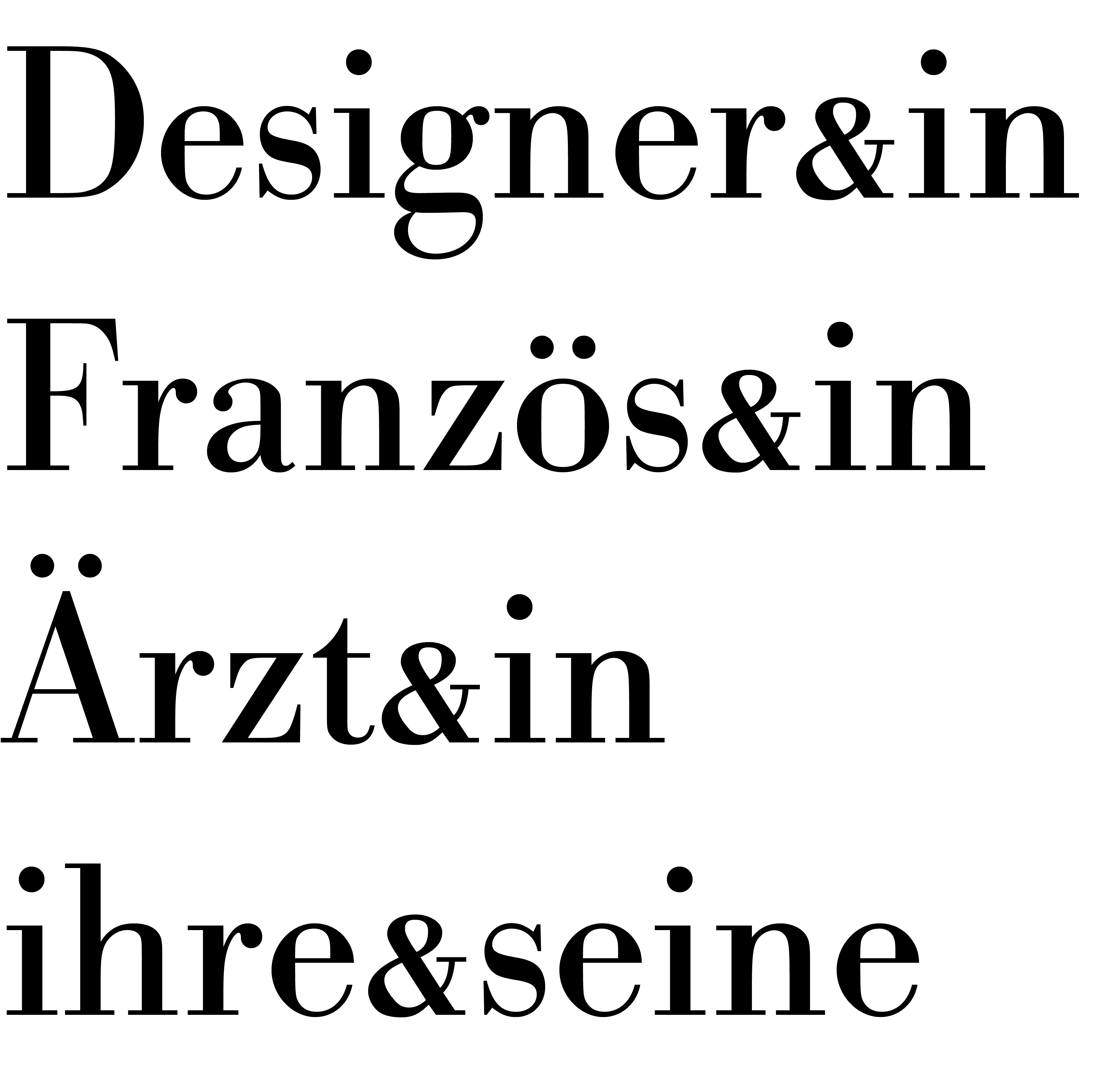Experience gender-inclusive and gender-free typography
More and more people are advocating for the use of gender-sensitive and anti-discriminatory language to break the binary gender system and counter discrimination. While gender-sensitive language forms are increasingly gaining ground in spoken language, they have yet to find a secure place in written text.
The project "Genderthek" presents innovative typographic approaches aimed at addressing common issues in the field of anti-discriminatory typography, providing optimized visualizations, and expanding access to this area. Additionally, the work is not only an attempt to make significant progress towards an inclusive and just society but also serves as an important basis for discussion for future developments in this sector.
The results achieved are merely suggestions and should not be understood as a definitive formula.
To examine the effect of different fonts on the readability and comprehension of texts, three fonts were selected that represent different typographic styles: Garamond, Helvetica, and Bodoni.
The use of the exemplary ending »r·in« serves to standardize gendering. However, there are other options shown in the resources.
The Gender Library does not include all analyzed modifications for the sake of clarity. However, these can be viewed through the resources.
Download the resources of all experiments to further engage with gender-sensitive and discrimination-free language.
Experiment:
Experiment:
Experience gender-inclusive and gender-free typography
More and more people are advocating for the use of gender-sensitive and anti-discriminatory language to break the binary gender system and counter discrimination. While gender-sensitive language forms are increasingly gaining ground in spoken language, they have yet to find a secure place in written text.
The project "Genderthek" presents innovative typographic approaches aimed at addressing common issues in the field of anti-discriminatory typography, providing optimized visualizations, and expanding access to this area. Additionally, the work is not only an attempt to make significant progress towards an inclusive and just society but also serves as an important basis for discussion for future developments in this sector.
The results achieved are merely suggestions and should not be understood as a definitive formula.
To examine the effect of different fonts on the readability and comprehension of texts, three fonts were selected that represent different typographic styles: Garamond, Helvetica, and Bodoni.
The use of the exemplary ending »r·in« serves to standardize gendering. However, there are other options shown in the resources.
The Gender Library does not include all analyzed modifications for the sake of clarity. However, these can be viewed through the resources.
Download the resources of all experiments to further engage with gender-sensitive and discrimination-free language.

























































